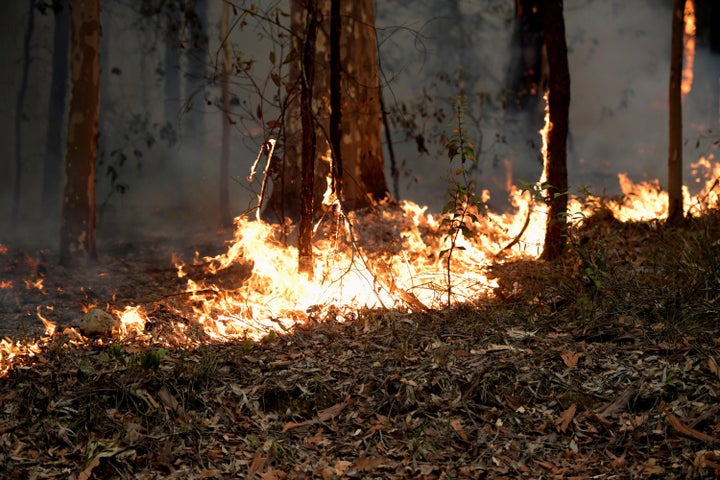Bushfires ravaging parts of Australia are expected to contribute up to 2% of what forecasters have predicted to be one of the biggest annual increases in carbon dioxide in the atmosphere since records began.
In its annual forecast, the Met Officers predicted that levels of the key greenhouse gas will reach new highs in 2020.
This year, carbon dioxide levels are set to rise by 2.7 parts per million compared to 2019, averaging 414 parts per million in the atmosphere over the year – ever higher than pre-industrial levels of around 280 parts per million.
The Met Office said it is the first time levels are set to remain about 410 parts per million throughout the year.
Human activities such as burning fossil fuels have been pushing up levels of carbon dioxide in the atmosphere every year since records began at Mauna Loa in Hawaii in 1958.
But around a tenth of the projected increase in 2020 is due to weather patterns that limit the ability of plants in so-called “carbon sinks”, such as tropical forests, to grow and take carbon dioxide out of the atmosphere.
Forecasters pointed the finger at warmer temperatures in the Pacific for the second year running for creating this situation.
This kind of weather pattern has – along with human-caused climate change pushing up temperatures – contributed to the hot, dry weather in Australia which played a key role in how severe the fires were, the Met Office said.
The fires that have been raging in Australia will contribute around 1-2% of the overall rise in concentrations of the greenhouse gas in 2020, according to its prediction.

Professor Richard Betts, of the Met Office Hadley Centre and University of Exeter, said: “Although the series of annual levels of carbon dioxide have always seen a year-on-year increase since 1958, driven by fossil fuel burning and deforestation, the rate of rise isn’t perfectly even because there are fluctuations in the response of ecosystem carbon sinks, especially tropical forests.”
While natural sources and stores of carbon create fluctuations, human activity is the driver of the long-term rise in carbon dioxide concentrations in the atmosphere, Betts added.
The report comes just a month after the Met Office said that 2020 was likely to be one of the hottest on record, with forecasters expecting global temperatures to be more than 1.1C higher than the pre-industrial average.
Meanwhile, the National Trust warned on Friday that almost three-quarters of the special natural areas it cares for are under threat from climate change.
Following its first climate audit, the charity discovered that 73% of the land – including upland oak woods and globally rare peatland – was considered to be sensitive or highly sensitive to increasingly turbulent weather events, rising seas and higher temperatures.

